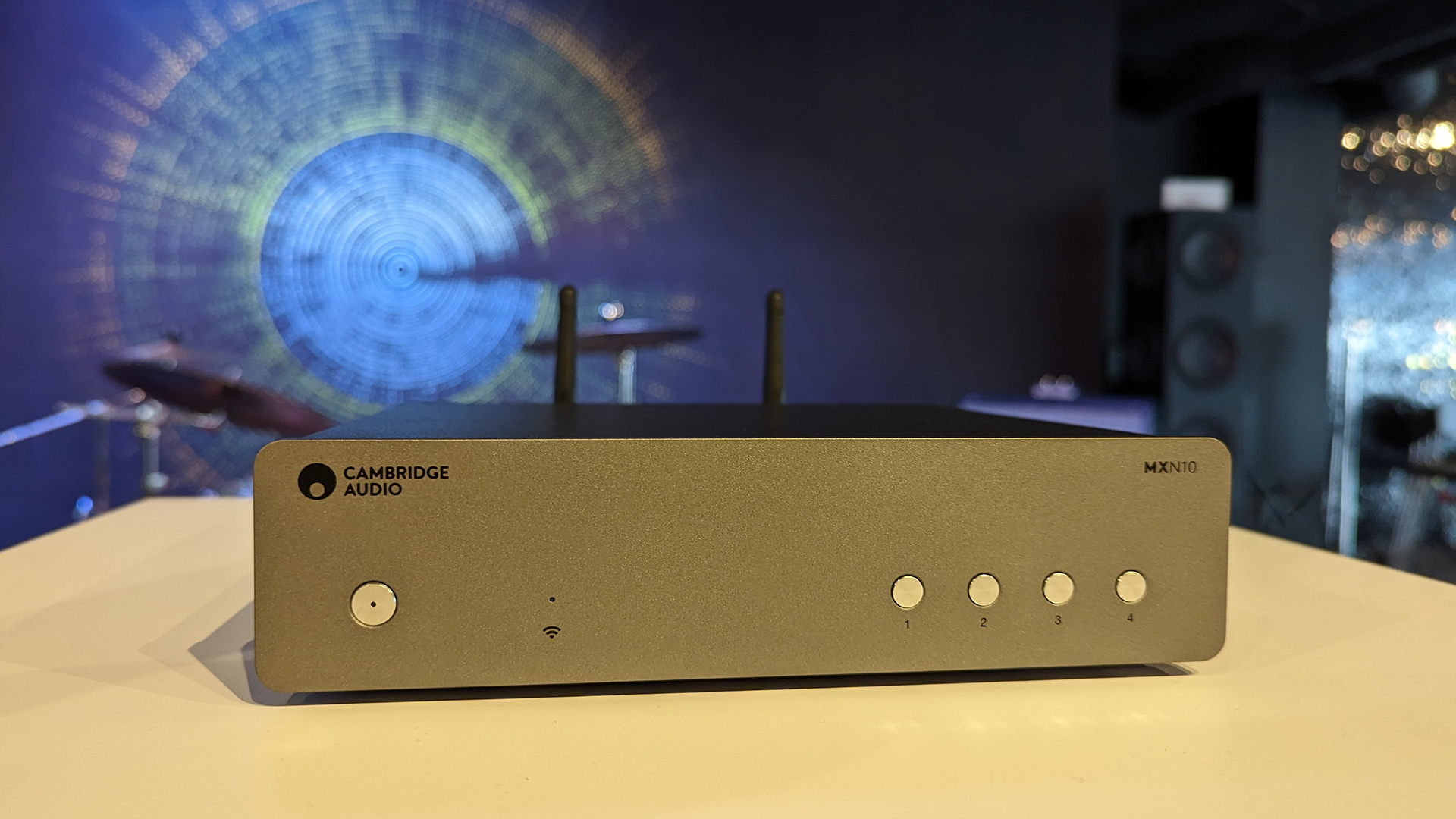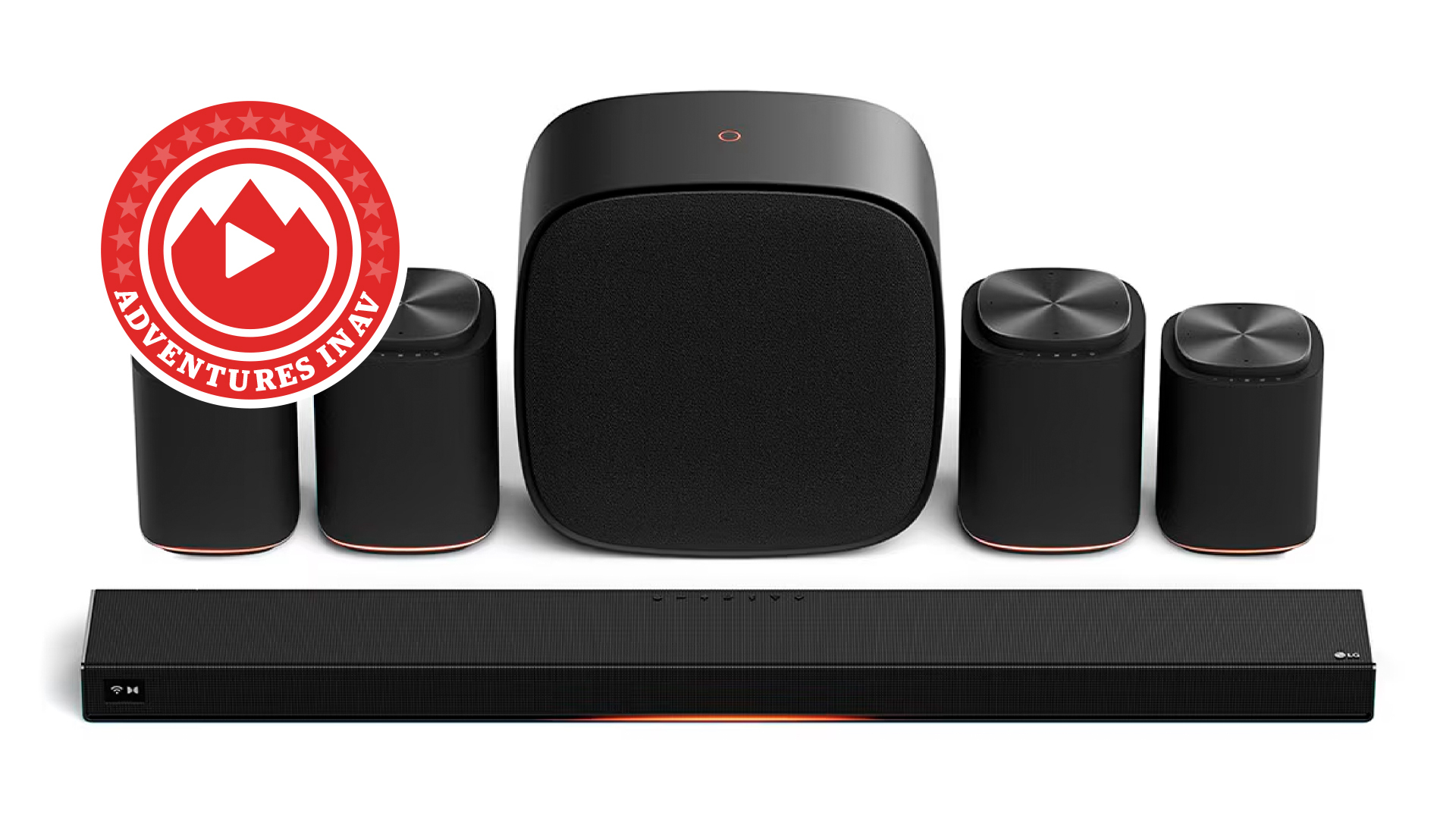I really hope Cambridge Audio's mini MXN10 is the start of a trend in hi-fi
Here’s why smaller tech is a big deal for me

OPINION: This week the team at What Hi-Fi? had the opportunity to visit Cambridge Audio’s London office and take a gander at its latest streamers, the limited edition AXN10 and small-form-factor MXN10.
And while there’s plenty to like about both, especially given that they share the same hardware and core feature set, it was the Cambridge Audio MXN10 that really stole the show for me, for two reasons.
First off, there’s its size. The MXN10 is outright dinky, measuring in at just 52 x 215 x 191mm. To put that in context, that makes it just bigger than a Mac Mini computer. Despite that, it’s full of decent hardware and has a not colossally silly £449 / $499 / €499 RRP.
Hardware highlights include AirPlay 2, Google Chromecast and Bluetooth 5.0 connectivity, an ESS Sabre ES9033Q DAC – which lets them stream hi-res audio files up to 32-bit/768kHz PCM and DSD512 files – and streaming support for all the usual suspects including Spotify Connect, Tidal and Qobuz.
It sounds silly, but the size is a big deal for me personally. I’ve just moved into a new house with my partner, and like any good husband-to-be, I’m having to make compromises about how we use the space.
While I’d love to turn the lounge into a fully kitted-out listening room with my comfy chair prime and placed in the sweet spot, it’s simply not on the cards for me. Instead, our shelves and lounge are being used for ”normal” things such as books, plants and cat beds.
This is why having something like the MXN10, whose small size means it can be discreetly slotted on a shelf without drawing too much attention to itself, is oh-so-appealing. I know I’m not the only one with this dilemma. Our managing editor, Becky Roberts, reported a similar yearning at the end of 2022.
The latest hi-fi, home cinema and tech news, reviews, buying advice and deals, direct to your inbox.
The second reason is its focus on helping bring older hardware back to life. Cambridge Audio representatives at our listening session were incredibly open about the fact the MXN10 was designed to let buyers “bring vintage hi-fi kit back up to date” and I’m all for this.
As we have seen in our That Was Then... Rotel RA820BX (1984) feature, which looked at how the iconic amplifier performs by today’s standards, there’s still plenty of life in a lot of older kit.
Having a small one-stop-shop streamer to connect up all the old hardware is a dream I have had for a long time, as my parents' house is a treasure trove of vintage hi-fi kit screaming for a second lease of life.
And though we haven’t yet reviewed it, I can’t help but get excited about the MXN10 as it is the first product I have seen that could do this. If it delivers, this is also a win for sustainability – it could save a lot of great, but vintage, kit from the dump and help reduce the amount of waste we create.
Yes, there have been other “streamers” appearing recently, (the NAD CS1 and Audio Pro Link 2, for example). But for me, these aren’t really in the same league as the MXN10 as they don’t have their own streaming module. This makes them more akin to the retired Chromecast Audio from Google, where they act as an endpoint as opposed to a full-fat stereo streamer.
This is why I can’t help but hope that the MXN10 is the start of a wider trend in the world of hi-fi focused on longevity and building products that can comfortably sit in all, not just audiophiles’, lounges.
MORE:
Check out our picks of the best music streamers
Need some new speakers? Here are our picks of the best speakers
Confused about music file types? Check out our what is hi-res audio? guide

Alastair is What Hi-Fi?’s editor in chief. He has well over a decade’s experience as a journalist working in both B2C and B2B press. During this time he’s covered everything from the launch of the first Amazon Echo to government cyber security policy. Prior to joining What Hi-Fi? he served as Trusted Reviews’ editor-in-chief. Outside of tech, he has a Masters from King’s College London in Ethics and the Philosophy of Religion, is an enthusiastic, but untalented, guitar player and runs a webcomic in his spare time.
